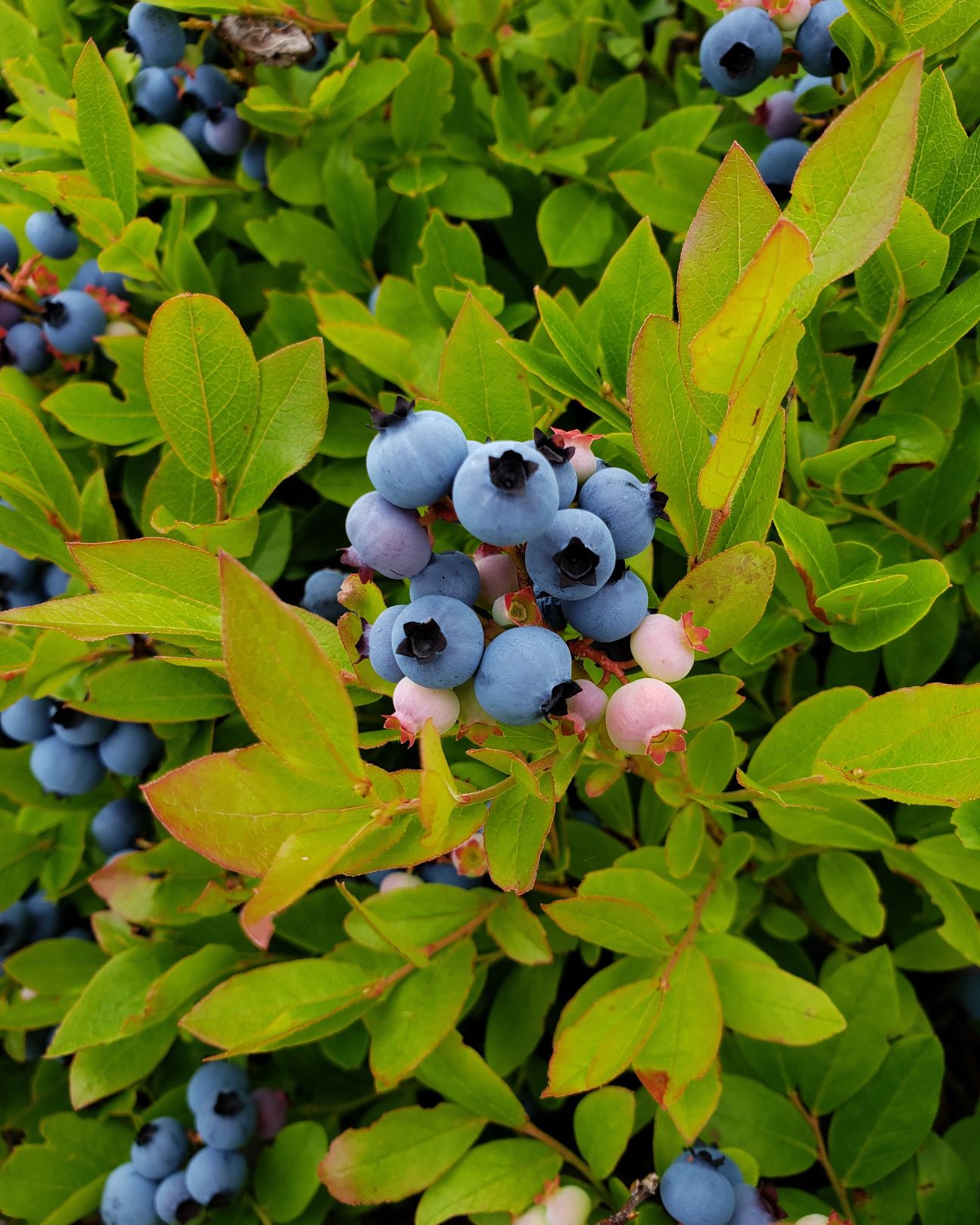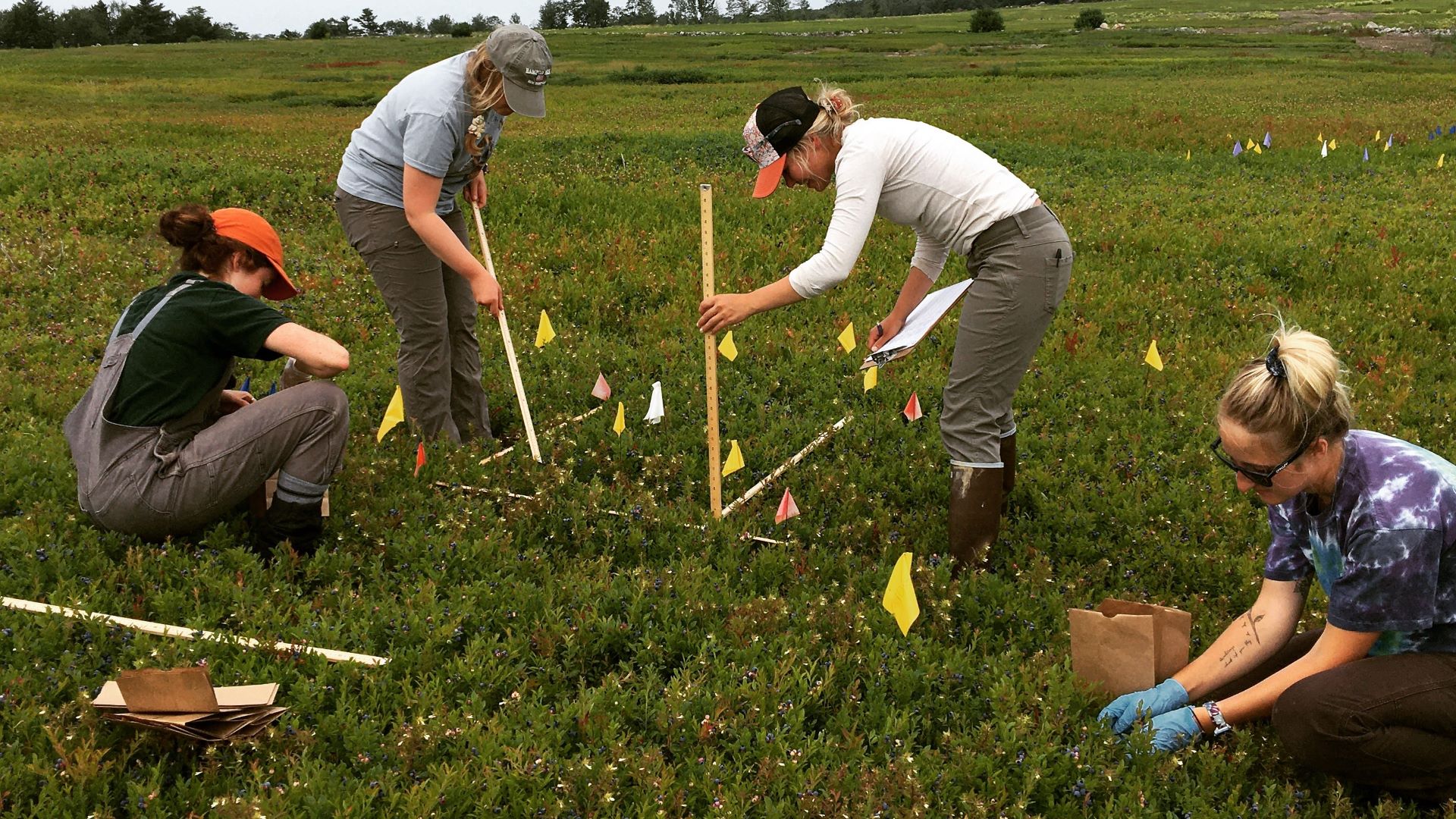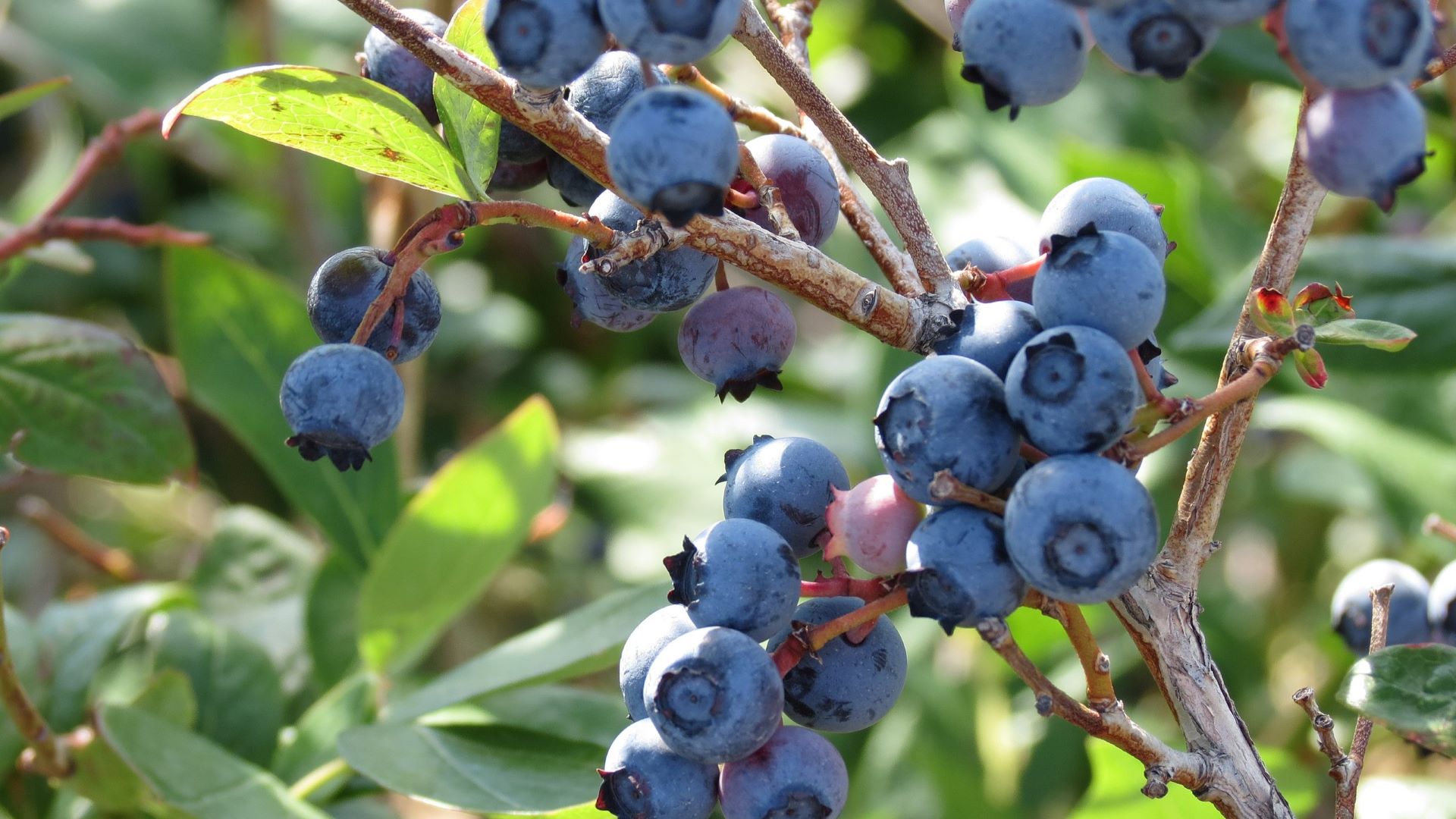ROQUE BLUFFS — Cool sea breezes off Englishman Bay graced the fields of Welch Farm on a piercing blue, mid-September day, revealing nothing of the heaving, dry summer months before. It was the third straight season of drought for the state’s midcoast and Down East coastal region — wild blueberry country. With the mighty harvester resting in the field, 52-year-old farm owner Lisa Hanscom drops into a chair in the boxing room, allowing herself a pause to consider the bleak tally of this year’s harvest.
“The yield last year was low, the year before even worse,” Hanscom said, shrugging a shoulder. “I just hope to break even, to stay in the game.”
For Hanscom’s family and other lowbush wild blueberry growers in Maine’s coastal counties — the counties hardest hit by the nearly statewide summer drought, according to the National Oceanic and Atmospheric Administration — staying in the game is a constant gamble.
Although official data won’t be reported until December, many of the state’s estimated 485 wild blueberry growers (Hanscom puts the number south of 200), say they lost 50 percent or more of their crop this year, especially in the midcoast where the drought was severe. Last year’s total yield for Maine’s lowbush wild blueberries — the smaller, tastier cousin of highbush cultivated blueberries grown all over the world — was a robust 103 million pounds. Most industry leaders predict this year’s yield will fall well short of that.
Hanscom hasn’t tallied her yield yet, but knows it’s low enough that she won’t be giving up her full-time job as director of Washington County Emergency Management, or part-time job driving a school bus.

Abnormally dry growing seasons are only one of the uncertainties growers must hedge against to protect these otherwise hardy, native plants – and their livelihoods. Crops are grown in two-year cycles, with growers harvesting only half of their land each year, allowing the other fields to develop for the following year. Climate change, with extreme fluctuations in temperatures and precipitation, including snowfall, can affect yields over as many as four growing seasons, meaning that even in years without a drought, the plants being harvested might fail to thrive, according to Dr. Lily Calderwood, the University of Maine Cooperative Extension wild blueberry specialist and assistant professor of horticulture.
“If they don’t have any nutrients to store over winter, or enough water, or have other stresses, such as diseases or dehydration from lack of snow cover for insulation, they may not produce very healthy stems and flower buds for the next year, when they actually flower and produce the fruit,” Calderwood said.
Calderwood and Dr. Yongjiang Zhang, a UMaine assistant professor of applied plant physiology, along with other researchers have several studies under way, looking at ways to mitigate the effects of drought and climate change by increasing soil moisture and plant resiliency.
UMaine wild blueberry researchers were recently awarded four U.S. Department of Agriculture Specialty Crop Block Grants (USDA) totaling more than $200,000. The funding will help continue and begin studies exploring the effectiveness and best use of irrigation systems, wood chip mulching, and new fertilizing and disease management strategies; using cutting-edge technologies and products, such as drone cameras to monitor soil and plant health, and biochar, a forestry byproduct that could dramatically improve soil moisture retention.
Although more testing is needed before scientists could recommend growers start using the biochar — what Zhang calls fancy charcoal with microspores to lock in soil moisture — he said biochar is affordable and has tremendous potential.
“It’s a really hot topic right now and could be a game changer for growers,” Zhang said. “The cool thing about biochar is that during the production process, there’s no carbon dioxide emission. So we can use biochar to mitigate drought for growers and slow down climate change because the carbon is locked in the biochar rather than releasing the carbon into the atmosphere.”
Researchers recommend a three-pronged approach: harvesting earlier for maximum yield, mulching and using irrigation systems. There appears agreement that climate change has shifted the harvest calendar substantially earlier, in some years as much as one month earlier than the historical harvest of mid-August. But when asked about the need or feasibility of installing irrigation systems starting at roughly $3,000 just for tubing, and potentially tens of thousands, if not hundreds of thousands of dollars, extra for pumps and wells, there are disagreements among researchers and growers — and at least one of Maine’s four Individual Quick Freezing (IQF) food processors.
Wyman’s of Maine, headquartered in Millbridge — the state’s largest IQF processor — is one of the processors that grows its own wild blueberries and buys wild blueberries from independent growers, at the industry-wide price set in December or January, to flash freeze and sell under its brand. Although Wyman’s irrigates about 40 percent of its own fields, its lead agronomist, Bruce Hall, said he doesn’t attribute the company’s estimated 4,000-pounds-per-acre bumper crop this year to irrigation.
“Irrigation is not a fixer for a bad crop or for bad farming,” Hall said. “It’s imperative for growers of any size and scale to look themselves in the mirror and first ask what they can do differently before asking for large capital dollars to do irrigation projects. There are serious improvements that can be made simply by adopting modern techniques.”
But some UMaine researchers disagree. They say irrigation probably won’t be optional as climate change ramps up as expected. The challenge they say is making it affordable, providing funding assistance to growers that need it, and best case, finding alternative means through research to help soils retain moisture with less rainfall or more targeted irrigation.
“It’s a complex ecosystem, when one thing shifts it impacts the rest of the season or other things in the plants’ ability to grow,” said Calderwood, who conducts experiments at UMaine’s Blueberry Hill high-tech wild blueberry research farm in Jonesboro. “We can’t predict what’s going to happen. Growers just need to be prepared for everything.”

The Specialty Crop Block grants awarded in August augment millions of dollars in funding from other already awarded or pending grants from federal, state and non-governmental agencies, including the Maine Department of Agriculture, Conservation, and Forestry; UMaine research funding; the Wild Blueberry Commission (an advocacy and lobbying arm of the wild blueberry industry funded with taxes from growers and processors); and the four major USDA Natural Resources Conservation Service (NRCS) financial assistance programs: Agricultural Management Assistance program (AMA), Conservation Stewardship Program (CSP), Environmental Quality Incentives Program (EQIP), and Regional Conservation Partnership Program (RCPP).
The Maine arm of the resource conservation service is also looking to the 2023 Farm Bill in Congress to possibly provide additional program funding opportunities, according to Thomas Kielbasa, the agency’s public affairs specialist in Maine. Kielbasa said that over the last three years, including 2022, the agency has provided nearly $40 million of financial assistance to Maine’s agriculture and forestry producers, including assistance for wild blueberry growers and processors. In addition to programs that offer potential cost-sharing assistance with irrigation, the agency offers wild blueberry producers assistance with conservation practices for plant productivity and pollinator concerns.
“Not all options may be practical or fiscally viable for all situations or clients,” Kielbasa said. “But even small steps taken toward addressing the challenges and vulnerabilities of climate change can make a difference.”
Long-time Blueberry Hill farm supervisor Dell Emerson of Wescogus Wild Blueberries in Addison is an 11th-generation farmer who runs the farm with his wife, Marie. She also runs Wild Blueberry Land, a Route 1 icon, museum, and wild blueberry emporium, and is a member of the Wild Blueberry Commission. With anxieties growing over competition, pricing — and now drought — the commission began holding listening sessions with wild blueberry growers this year. Drought tops their list of concerns. Dell Emerson sees climate change as a unique threat.
“The climate extremes are raising hell, especially for smaller growers, but they aren’t sure where to go for help,” he said.
Hanscom, who with Marie Emerson are the only women on the commission, said state and federal grant programs are confusing and not transparent. Hanscom moderated the Sept. 14 listening session, where other growers also expressed frustration.
“I’m someone who pays attention to things,” said Hanscom. “I tell them, don’t feel bad. If I don’t know how to do it, then there’s a problem.”
The NRCS, one of the major grant administrators, could not immediately provide a breakdown of how much of its program funding went specifically to wild blueberry growers, or specifics of the cost-sharing program for projects such as irrigation, or how many growers have been helped. Kielbasa said they hope the NRCS’s awareness efforts will at least help get growers and processors to contact NRCS conservationists and see what might be available.
Eric Venturini, the executive director of the Wild Blueberry Commission, said market conditions continue to strengthen, with demand for Maine wild blueberries up 78 percent over the last five years. He said the only challenge is keeping yields up to meet demand. Still, he said there’s more work needed on behalf of growers, including advocating for them with major funders such as the NRCS.
“I’m really hopeful that we can make those NRCS programs work even better, and make them more accessible, easier for folks to use and really less risky for folks, for irrigation in particular.”
Over the previous two years, the commission spent over $2.5 million for promotion, research and lobbying to secure more funding for growers at the state and federal level, including working to get state legislation passed this year to establish a $10 million per year fund for 10 years to assist growers with projects such as infrastructure and irrigation. But money to fund the legislation has not been approved.
With climate change breathing at their backs, Hanscom and others fear many small wild blueberry growers, literally, can’t afford to wait. As for Welch Farm, Hanscom said she’ll carry on, no matter how hot it gets. But she worries about the legacy of Maine’s wild blueberries.
Adjusting the brim of her cap to block the sun, Hanscom grows somber, “Once it’s gone, then it’s gone completely and we’re going to lose part of our heritage, our culture.”








